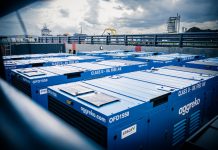
Remote edge sites will face significant challenges around resilience, remote monitoring and a lack of standardisation. So, what will be required to overcome these hurdles?
By 2025, 75% of enterprise data is expected to be created and processed at the edge, according to Gartner. There has been a great deal of discussion of what actually constitutes ‘the edge’, in recent years, but for the Infrastructure Masons, the edge is defined as: “A computing enclosure/space/facility geographically dispersed to be physically closer to the point of origin of data or a user base.”
Dave Johnson, executive VP, secure power division, at Schneider Electric, predicts there will be three large edge computing opportunities – in the commercial, industrial and telco sectors. The ‘commercial edge’ will encompass retail, healthcare, finance and education sectors, while the ‘industrial edge’ will include the oil and gas, mining, automotive and manufacturing sectors. For the Telco sector, the edge will be located in remote locations, close to cell towers and base stations.
Johnson points out that all three opportunities face the challenges of poor resiliency, a lack of remote monitoring and management, a lack of standardisation and integration, and a large number of sites with limited IT staff.
Jim Simonelli – SVP, emerging businesses, at Schneider Electric, explains that the move to ‘the edge’ is being driven by latency reasons and the need for data privacy, as well as bandwidth.
However, the edge data centre needs to be always available, and “serviced and managed in a cost-effective manner”.
“Businesses cannot afford to have a service team based on site, waiting for something to happen,” comments Simonelli. “Systems need to be simple to replace and simple to manage.”
To support IT professionals in developing a strategy to deploy IT at the edge, Schneider Electric has released a new White Paper, entitled Solving Edge Computing Infrastructure Challenges. The paper creates a structure for anticipating potential issues at the edge and details how to identify an ecosystem of partners with which to collaborate, integrate and deliver all of the essential infrastructure components required.
The White Paper highlights a need for a pre-integrated and collaborative approach within the vendor ecosystem, in addition to rule-based configuration tools, reference designs and cloud-based management software, to make edge solutions faster to deploy, more resilient, and cost-effective for customers.
This collaborative approach requires an integrated ‘edge’ ecosystem comprised of IT and infrastructure vendors, original equipment manufacturers (OEMs), systems integrators and managed service providers (MSPs), who work together to simplify, accelerate, and ensure resiliency at the edge. The ecosystem works for the end user to monitor and maintain all edge assets, while delivering greater levels of uptime and cost-effectiveness. The ecosystem, in effect, becomes the extended workforce of the end user.
Additionally, today’s businesses must rely on cloud-based management software, ie data centre management as a service (DMaaS) solutions and on-premise data centre infrastructure management (DCIM) tools, to manage multiple edge data centres efficiently in real-time. Using a combination of pre-integrated hardware solutions, in addition to cloud-based software, can reduce field engineering costs by between 25% and 40%, while increasing uptime and availability.
This monitoring technology should draw on ‘big data analytics’ to deliver better performance with predictive capability. EcoStruxure IT is an example of one such development –a cloud-based solution, the system not only provides remote monitoring and management of assets, but also provides foresight into potential risks by leveraging global benchmarks and analytics in the EcoStruxure ‘data lake’.
Speaking at a press summit in Andover, Massachusetts, Johnson, commented: “This is already a reality. There are over 160,000 connected devices and more than 2,000 users are monitoring their assets via the EcoStruxure IT platform. We are collecting over 450 million data points per day.”
To simplify deployment and management of physical infrastructure at the edge, Schneider Electric also announced a new solution for micro data centres that couples the company’s APC physical infrastructure with Cisco’s HyperFlex Edge, hyperconverged infrastructure (HCI). The customisable micro data centre has been pre-engineered to seamlessly join APC and Cisco equipment for a solution that is pre-integrated, remotely monitorable and physically secure.



